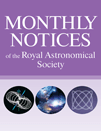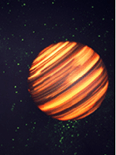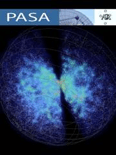
Contributions of the Astronomical Observatory Skalnate Pleso
Scope & Guideline
Fostering Discovery: Where Slovak Research Meets Global Astronomy
Introduction
Aims and Scopes
- Stellar and Binary Systems:
Research on the characteristics, dynamics, and evolution of binary star systems, including eclipsing binaries and contact binaries, with a focus on their light curves and system parameters. - Exoplanet Detection and Characterization:
Studies related to the discovery and analysis of exoplanets, including their atmospheric properties and orbital dynamics, utilizing data from missions like TESS and PLATO. - Astrophysical Phenomena:
Exploration of various astrophysical events such as novae, supernovae, and outbursts from accreting white dwarfs, contributing to understanding stellar evolution and transient phenomena. - Instrumentation and Methodologies:
Development and application of new observational techniques and instruments, including robotic telescopes and advanced photometric systems, to enhance data acquisition in astronomy. - Astrostatistics and Data Analysis:
Employing statistical methods and computational techniques, including machine learning and deep learning, to analyze and interpret large astronomical datasets. - Galactic and Extragalactic Studies:
Research into star formation processes in galaxies, the dynamics of open clusters, and the broader implications of these findings for our understanding of the universe.
Trending and Emerging
- Deep Learning and AI in Astronomy:
There is an increasing trend in utilizing deep learning techniques for classifying astronomical objects and analyzing large datasets, showcasing the integration of advanced computational methods in modern astrophysics. - Photometric and Spectroscopic Monitoring:
A growing emphasis on continuous monitoring of variable stars and transient events using photometric and spectroscopic techniques has emerged, highlighting the importance of time-domain astronomy. - Galactic Archaeology and Stellar Populations:
Research into the history and structure of the Milky Way through the study of stellar populations and their dynamics is gaining traction, reflecting a broader interest in understanding galactic formation and evolution. - Robotic and Autonomous Observatories:
The development and utilization of robotic telescopes for autonomous observations and data collection is becoming increasingly prominent, indicating a shift towards more efficient and innovative observational strategies. - Exoplanetary Atmospheres and Habitability:
Research focusing on the atmospheres of exoplanets and their potential habitability is on the rise, emphasizing the significance of understanding planetary systems beyond our own.
Declining or Waning
- Solar and Space Weather Studies:
Research on solar activity and its effects on the ionosphere and space weather phenomena has become less prominent, indicating a potential shift away from this area of interest. - Astrophysical Laboratory Studies:
Laboratory-based astrophysical research, including studies of ionic interactions and spectral line broadening, has seen a reduction, possibly reflecting a greater focus on observational astronomy. - Cometary Studies:
While there were several papers on comets in earlier volumes, recent publications show a decrease in this niche, suggesting a shift towards more pressing topics in stellar and exoplanetary research. - Meteor and Asteroid Observations:
Although meteor and asteroid studies were once a focal point, the frequency of these topics has diminished, possibly as the journal's emphasis has moved towards more complex stellar phenomena.
Similar Journals

PUBLICATIONS OF THE ASTRONOMICAL SOCIETY OF JAPAN
Illuminating the cosmos with cutting-edge discoveries.Publications of the Astronomical Society of Japan is a prestigious, peer-reviewed journal dedicated to advancing the field of astronomy and astrophysics. Published by Oxford University Press, this journal provides a platform for high-quality research, fostering scientific communication among both established researchers and emerging scholars. With an ISSN of 0004-6264 and E-ISSN 2053-051X, it is recognized for its significant impact in its field, boasting a Q2 ranking in both Astronomy and Astrophysics and Space and Planetary Science as of 2023. The journal seeks to bridge traditional and innovative approaches to expand understanding of celestial phenomena, making it an essential resource for professionals, students, and researchers alike. Researchers can access a wealth of cutting-edge studies spanning theoretical and observational aspects of astronomy from its inception in 1996 to the present day. Although the journal operates under a traditional access model, it remains a respected forum for pivotal discoveries and discussions within the global astronomical community.

Romanian Astronomical Journal
Elevating the discourse in Astronomy and Astrophysics.Welcome to the Romanian Astronomical Journal, a distinguished publication operating under the esteemed EDITURA ACAD ROMANE, dedicated to advancing the field of Astronomy and Astrophysics. With a rich tradition rooted in Romania, this journal aims to foster scholarly discourse and disseminate pivotal research findings within the cosmic sciences. Although currently not designated as Open Access, the journal remains committed to ensuring that its content meets rigorous academic standards. The Romanian Astronomical Journal holds a commendable position in the academic community, achieving a Q3 ranking in Astronomy and Astrophysics and a Q4 ranking in Space and Planetary Science for 2023, reflecting its contribution to the scientific landscape. With a focus on originality and scholarly excellence, this journal serves as a vital resource for researchers, professionals, and students alike, promoting a deeper understanding of the universe and our place within it. Positioned at the intersection of innovative research and practical application, the Romanian Astronomical Journal invites contributions that push the boundaries of knowledge in our field.

Bulgarian Astronomical Journal
Advancing Knowledge in Astronomy and AstrophysicsThe Bulgarian Astronomical Journal, published by the BULGARIAN ACADEMY OF SCIENCES, INSTITUTE OF ASTRONOMY, serves as a vital platform for the dissemination of research in the field of Astronomy and Astrophysics. With the ISSN 1313-2709 and E-ISSN 1314-5592, this journal has been pivotal in showcasing original studies and advancements in astronomical sciences from 2014 and will continue to do so through 2025. Although categorized in Q4 within the ambit of Astronomy and Astrophysics, it provides essential insights and innovative findings, making significant contributions to the global academic community. Positioned in the lower quartile of Scopus rankings, recognized as #87 out of 90, it offers an opportunity for burgeoning researchers and seasoned professionals alike to engage with emerging ideas and trends in the discipline. While it currently does not feature an open access model, readers and contributors can anticipate a rich exchange of scientific knowledge that fosters collaboration within the astronomy community.

EXPERIMENTAL ASTRONOMY
Exploring the Universe through Experimental InnovationEXPERIMENTAL ASTRONOMY, published by Springer, stands as a pivotal journal in the fields of Astronomy and Astrophysics as well as Space and Planetary Science. With an impressive Scopus ranking and a Q2 category as of 2023, the journal is recognized for its impactful contributions to experimental techniques and observations in astronomy. Covering a broad spectrum of topics from cosmic phenomena to planetary exploration, it serves as a vital platform for researchers, professionals, and students to disseminate and discuss innovative ideas and findings. The journal has evolved through various convergence years since its inception in 1989 and continues to thrive, fostering an environment for academic pursuit and collaboration. Though not an open-access journal, its rigorous peer-review process ensures high-quality publications that are essential for advancing the scientific community's understanding of the universe.

Universe
Exploring the Cosmos, One Discovery at a Time.Universe is a distinguished peer-reviewed journal published by MDPI, specializing in the dynamic fields of Physics and Astronomy. Established in 2015, this Open Access journal has rapidly gained recognition, achieving a prestigious Q1 quartile ranking in its category as of 2023. With its E-ISSN 2218-1997, the journal primarily serves the international scientific community, offering a platform for researchers to disseminate innovative ideas and findings. Based in Switzerland, Universe covers a wide range of topics within astronomy and astrophysics, ensuring that cutting-edge research is accessible to an ever-growing audience. Its commitment to open access principles since its inception allows for unrestricted dissemination of knowledge, fostering a collaborative environment essential for scientific advancement. By aligning its objectives with the promotion of high-quality research and interdisciplinary discourse, Universe stands as a vital resource for academics, professionals, and students aiming to contribute to and engage with the ever-evolving landscape of astronomical research.

MONTHLY NOTICES OF THE ROYAL ASTRONOMICAL SOCIETY
Advancing Knowledge in Astronomy and Beyond.The MONTHLY NOTICES OF THE ROYAL ASTRONOMICAL SOCIETY (MNRAS), published by Oxford University Press, serves as a premier platform for the dissemination of significant research in the fields of Astronomy, Astrophysics, and Space and Planetary Science. Established in 1913 and with an impressive impact factor reflected in its 2023 Q1 rankings—13th in Earth and Planetary Sciences and 14th in Physics and Astronomy—this journal is renowned for its rigorous peer-reviewed articles, fostering advancements in our understanding of the universe. Researchers, professionals, and students alike benefit from its rich content, which spans a vast array of topics within its scope, from stellar dynamics to planetary formation. While the journal does not currently offer Open Access options, the scholarly contributions published herein are invaluable for pushing the boundaries of contemporary scientific inquiry and ensuring that the latest findings reach an engaged audience globally.

Annual Review of Astronomy and Astrophysics
Charting the latest discoveries in astronomy and astrophysics.Annual Review of Astronomy and Astrophysics is a premier academic journal published by Annual Reviews, dedicated to advancing knowledge in the fields of astronomy and astrophysics. With an impressive impact factor and recognition as a Q1 journal in both Astronomy and Astrophysics, as well as Space and Planetary Science, it stands amongst the top-ranked publications globally with Scopus Rankings placing it in the 99th percentile. The journal spans over three decades of scholarly contributions from 1990 to 2023, creating a rich repository of knowledge for researchers, professionals, and students alike. Although it does not offer Open Access, its rigorous peer-review process ensures the utmost quality and relevance of published articles, making it an essential resource for anyone seeking to stay at the forefront of developments in the cosmos. With its dedication to covering the forefront of research and essential reviews, the Annual Review of Astronomy and Astrophysics is vital for those engaged in exploring the universe and its phenomena.

PUBLICATIONS OF THE ASTRONOMICAL SOCIETY OF AUSTRALIA
Pioneering Research in the Vastness of Space.Publications of the Astronomical Society of Australia, published by Cambridge University Press, stands as a distinguished platform for advancing knowledge in the realms of Astronomy, Astrophysics, Space, and Planetary Science. Hemmed in the United Kingdom, this journal is recognized for its outstanding contributions, reflected in its status as a Q1 journal in both Astronomy and Astrophysics, along with Space and Planetary Science categories as of 2023. With a solid impact factor, it ranks impressively at #23 within its Scopus category, firmly placing it in the competitive 75th percentile. This publication facilitates open discourse and innovative research from its inception in 1996 to the present year of 2024, providing an essential resource for researchers, professionals, and students eager to deepen their understanding of cosmic phenomena. By embracing rigorous peer-review standards and a commitment to scholarly excellence, the journal not only contributes to the scientific community but also fosters the next generation of astronomical research.

Serbian Astronomical Journal
Pioneering Astronomical Research for a Global AudienceSerbian Astronomical Journal, published by the Astronomical Observatory Belgrade, serves as a significant platform for research and innovation within the field of astronomy and astrophysics. With an established publication history since 1992 and an Open Access model, the journal ensures that its cutting-edge research is accessible to a global audience. The journal is recognized for its contribution to the scientific community, evidenced by its solid position in the 2023 Scopus category quartiles, ranking Q3 in Astronomy and Astrophysics. This positions it among notable journals in the discipline, despite being at the 18th percentile of its category rankings. Researchers, professionals, and students will find in Serbian Astronomical Journal a valuable resource for disseminating findings, exploring new discoveries, and engaging with contemporary challenges in astronomy. As the journal continues to evolve, it remains dedicated to advancing the knowledge and understanding of the universe.

Astrophysical Bulletin
Navigating the Frontiers of Astronomy and AstrophysicsWelcome to the Astrophysical Bulletin, an esteemed journal published by MAIK NAUKA/INTERPERIODICA/SPRINGER that has been contributing to the fields of Astronomy and Astrophysics since its inception in 2009. With a prominent Q3 rating in both Astronomy and Astrophysics and Instrumentation, this journal is designed to foster an understanding of astronomical phenomena through comprehensive research articles and groundbreaking discoveries. While currently not offering open access, it remains a vital resource for researchers and professionals looking to stay informed on the latest advances in the field, featuring a compelling selection of peer-reviewed studies that underscore its relevance and impact. The Astrophysical Bulletin ranks impressively in Scopus, making it a trusted platform for disseminating vital knowledge and new insights into our universe.